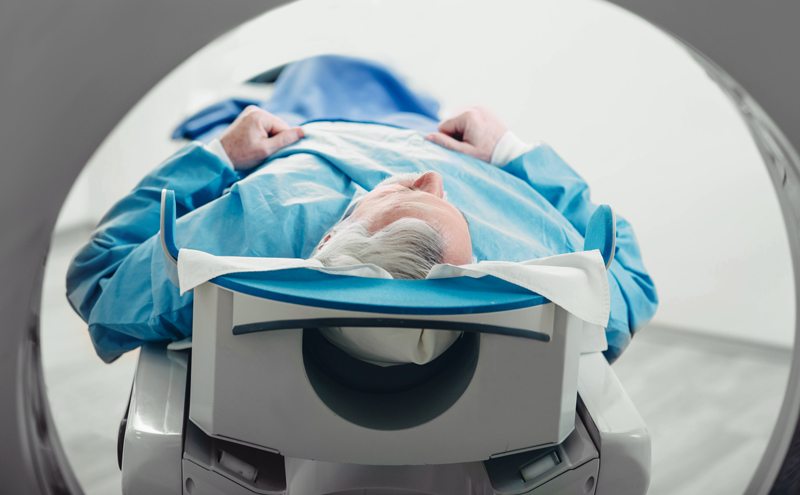Lung Cancer Prevention & Detection Saves Lives
Lung cancer is a deadly disease. In fact, according to the American Cancer Society, this leading cause of cancer death kills more men and women than colon, breast and prostate cancers combined. To help reduce the number of lung cancer deaths in the future, the American Cancer Society has expanded its lung cancer screening recommendations.

Updated Guidelines Expand Eligibility for Lung Cancer Screening
Lung cancer is a deadly disease. In fact, according to the American Cancer Society, this leading cause of cancer death kills more men and women than colon, breast and prostate cancers combined. To help reduce the number of lung cancer deaths in the future, the American Cancer Society has expanded its lung cancer screening recommendations.
Annual lung cancer CT screenings are now recommended for smokers and former smokers who:
- Are 50–80 years old
- Have a longtime history of smoking (20 pack-years or more)
One pack-year = smoking one pack of cigarettes per day for a year
The most notable change in the guideline update is that former smokers are now recommended to continue annual screenings even if it has been more than 15 years since quitting. Current research indicates that while quitting remains beneficial, even if you have quit smoking, your lung cancer risk will continue to increase with age.
Why Are Lung Cancer Deaths So Common?
Too often, lung cancer is not caught until the disease has advanced or spread to other organs. Some patients report no symptoms in the early stages, while others experience symptoms that may be mistaken for other general illnesses or just attributed to not feeling well.
Symptoms may include:
- Persistent or worsening cough
- Chest pain
- Wheezing or shortness of breath
- Coughing up blood
- Fatigue or weakness
- Loss of appetite or weight loss
- Persistent or recurring bronchitis or pneumonia
Smokers: How to Improve Your Chances of Survival
There are ways to reduce your lung cancer risk and screen for the disease in its early, most treatable stages.
- Quit Smoking
Approximately 80–90% of lung cancer deaths in the U.S. are linked to smoking.1 Regardless of how long you have smoked or how old you are, quitting can reduce your risk. - Lung Cancer CT Screening
For longtime smokers, Low-Dose Computed Tomography (CT) can help detect lung cancer before symptoms occur. Studies have shown lung cancer CT screening to decrease the risk of lung cancer death in current and former heavy smokers.2
What Is a Lung Cancer CT Screening?
Lung cancer screening involves taking a series of X-rays of the lungs to look for abnormalities. The procedure does use a low dose of radiation, but exposure through CT scanning is typically less than that of traditional X-rays. The scan is usually complete in just a few minutes and can provide peace of mind or help you catch issues early, while the chances of successful treatment are highest.
Nonsmokers: How to Reduce Your Risk
Lung cancer screening is not recommended for people who have never smoked. But there are two especially helpful ways to reduce your risk.
- Test Your Home for Radon
Surprisingly, radon exposure is believed to be responsible for more deaths each year than secondhand smoke. Testing your home is essential for your family’s safety. - Avoid Secondhand SmokeEven if you don’t smoke yourself, regular exposure to secondhand smoke can increase your risk of lung cancer by as much as 20–30%.1
Local Lung Cancer Screening Available
DRI Greensboro Imaging is committed to providing cutting-edge preventive and diagnostic imaging to help further reduce lung cancer deaths in our community. To schedule a lung cancer CT screening, contact us at 336.433.5000.
1Centers for Disease Control and Prevention, cdc.gov
2National Cancer Institute, cancer.gov
